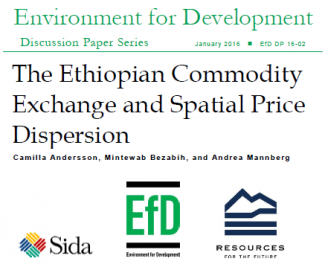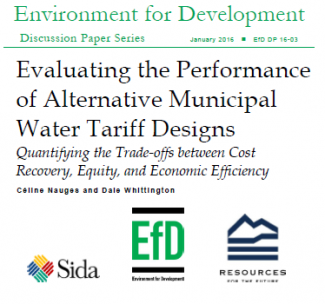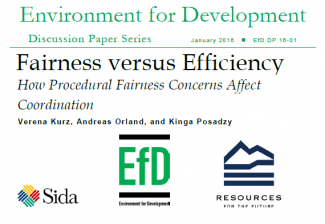FILTER
Displaying 2331 - 2340 of 3840 publications
In this article, we study the impact of an institutional intervention on market efficiency in Ethiopia. More specifically, we study whether regional warehouses that are connected to a national…
| EfD Discussion Paper | EthiopiaTanzania has high rates of deforestation and forest degradation. Reducing deforestation and forest degradation is an important strategy for reducing greenhouse gas emissions. However, asking…
| Peer Reviewed | TanzaniaThe design of municipal water tariffs requires balancing multiple criteria such as financial self-sufficiency for the service provider, equity, and economic efficiency for society. A modelling…
| EfD Discussion Paper | KenyaNatural and artificial ecosystems (such as agricultural ecosystems), confer benefits in the form of provisioning, regulatory, cultural and habitat goods and services to nations and humanity as a whole…
| Peer Reviewed | KenyaNatural and artificial ecosystems (such as agricultural ecosystems), confer benefits in the form of provisioning, regulatory, cultural and habitat goods and services to nations and humanity as a whole…
| Peer Reviewed | KenyaLand conflicts in developing countries are costly both directly and through increased land degradation. An important policy goal is to create respect for borders. This often involves mandatory…
| Peer Reviewed | Ethiopia, Global HubWhat happens if a mechanism that aims at improving coordination between individuals treats selected individuals unfairly? We investigate in a laboratory experiment whether procedural fairness concerns…
| Discussion Paper, EfD Discussion Paper |South Africa, a main food exporter in SADC, is characterised by a dual agricultural economy consisting of a well-developed commercial sector and smallholder, often subsistence, farming. Using the…
| Peer Reviewed | South Africa, TanzaniaThis paper looks at the impact of land restitution involving the Khomani San “bushmen” in the Kgalagadi area of South Africa. It seeks to investigate the effect of land restitution on poverty…
| Peer Reviewed | South AfricaThe paper analyzes the economic impacts of climate change-induced fluctuations on the performance of Ethiopia's agriculture, using a countrywide computable general equilibrium (CGE) model. We model…
| Peer Reviewed | Ethiopia

